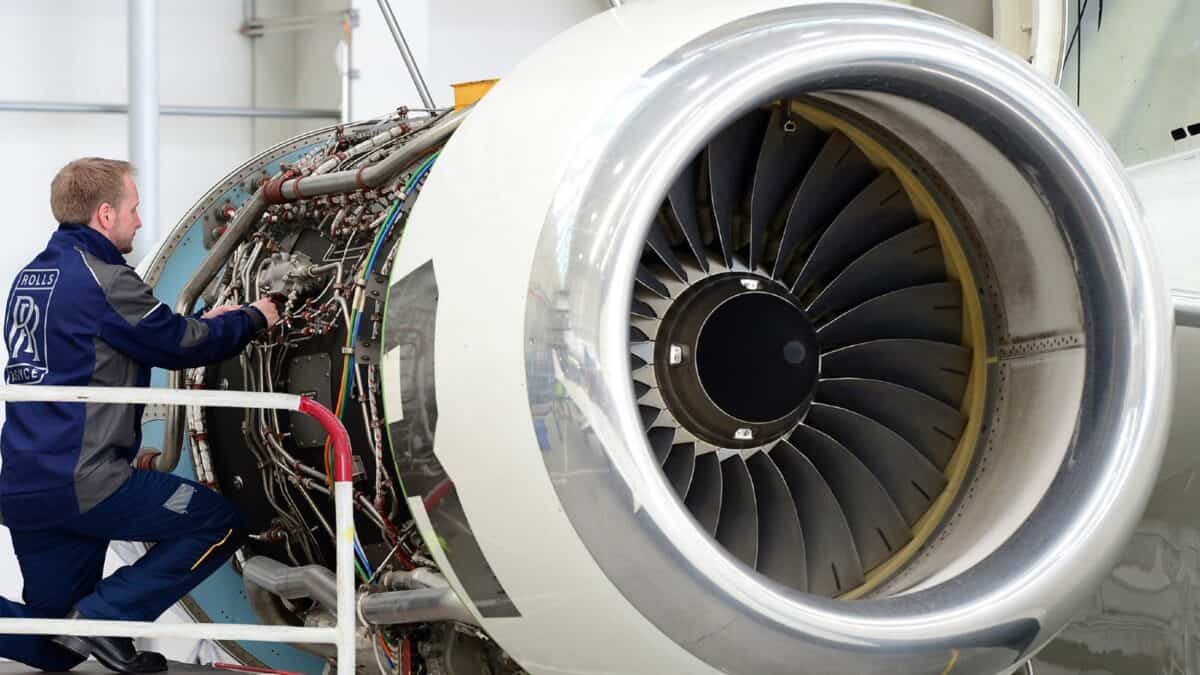It’s starting to look like £2 is a support level for the Rolls-Royce (LSE:RR) share price. That’s certainly the case in the near term. But let’s take a long-term perspective. Is Rolls-Royce a good buy at £2, or will the stock reverse its recent gains?
Bullish broker
Rolls-Royce shares have surged over 12 months, up 175%. UBS thinks it could go further, and is among the most bullish brokers on Rolls.
In UBS’s optimistic scenario, the Rolls-Royce stock could potentially reach 600p, while in its more pessimistic scenario, it could drop to 100p.
The Swiss bank said it is possible that Rolls-Royce could achieve £2bn in free cash flow by as early as 2024, with an underlying free cash flow of £2.8bn in 2026.
In the near term, UBS also pointed to increased flying hours in the second half of the year, while highlighting potential economic risks related to the company’s exposure to the Chinese market.
Nonetheless, not all financial analysts share this optimistic view. The consensus includes seven ‘buy’ ratings, one ‘outperform’, and nine ‘holds’, with an average price target of 234p.
So, could the FTSE 100 stalwart drop back below £2? Well, as noted, there seems to be some support coming in around £2. In other words, there are purchase orders at this price.
It’s also worth noting that Rolls doesn’t look overly expensive compared to its peers. Rolls’s price-to-sales (P/S) ratio is 1.05 times, which is better than General Electric at 1.6 times, and the industrials sector average at 1.3 times.
Technical data also supports this. The Relative Strength Index shows Rolls-Royce has a reading around 30. This is a figure that tends to highlight buying conditions.
No longer a burning platform
Rolls-Royce CEO Tufan Erginbilgic called his company a “burning platform” shortly after taking over the helm. It was a metaphor to describe the company’s precarious financial situation and the need for urgent change.
So, 10 months later, is Rolls really safe? Well, the company has just embarked on a cost-cutting programme that will see 2,500 jobs lost. That’s a sign that the job isn’t complete.
Chief executive Tufan Erginbilgic said: “We are building a Rolls-Royce that is fit for the future. That means a more streamlined and efficient organisation that will deliver for our customers, partners and shareholders”.
It certainly appears that Rolls is on the right track, although I hope these cutbacks don’t mean the company reduces its R&D output. The British engineering giant is at the forefront of technological developments that require a stable financial footing, but also adequate funding.
This includes projects like the hydrogen-fuelled Pearl 700 which has the capacity to transform the narrow-body aircraft market. In a recent update, Rolls said it had been successfully designs its advanced fuel spray nozzles to control the combustion process.
While such a project may fail to reach the market, consistent R&D enhances the long-term prospects of this engineering giant.
I’ve recently sold my Rolls-Royce shares because my gains were already pretty significant. Nonetheless, I appreciate the long-term hypothesis and may revisit the stock soon.








